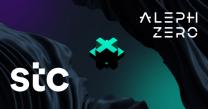Engineered Destruction: One Year Post-ICO, This Startup is Destroying All Issued Tokens Due to Market Speculation
Photo by Micah Williams on Unsplash
Crypto risk management and inheritance platform Digipulse announced the total burn of all DGPT tokens at the end of 2018, citing speculation-driven fluctuation in token price as the key driver behind the complete elimination of the Digipulse token model.
Only one year following the successful conclusion of an initial coin offering (ICO), the Digipulse platform, which aims to offer cryptocurrency investors an answer to the question “what happens to my digital assets in the event of my untimely demise?” announced that it will destroy all tokens issued.
ATTN: Digipulse token holders can:
? exchange their $DGPT for a share in the company (for 10k holders and above)
? become a 'lifelong' Digipulse Premium subscriber (proportionally to the number of tokens held). More info: https://t.co/xNxPn3DDMm #digital #inheritance pic.twitter.com/uVEXbmDLRR— Digipulse (@DigiPulseIO) August 2, 2018
Digipulse offers a decentralized vault storage that allows crypto holders to minimize the risk of losing their digital assets should the worst occur. While the platform may have been launched via an ICO intended to provide users with the ability to buy DGPT tokens at a discounted price, Digipulse CEO Normunds Kvilis states that virtually none of the investors that participated in the Digipulse ICO have allocated tokens to the service.
All DGPT Tokens Will Be Burned
Kvilis outlines the decision to eliminate the token-based model the platform launched in a detailed post on the Digipulse blog, highlighting the fact that of the 320 new signups the platform received since launch, only two have actually used the utility tokens sold in the Digipulse ICO.
The original goal of the Digipulse project was to address a simple problem present within the cryptocurrency ecosystem—how are digital assets distributed in the event of the owner’s death? The Digipulse solution to this issue was simple, and arguably highly effective—store digital assets on a distributed database facilitated by Storj, with blockchain technology and smart contracts working in concert to distribute assets should specific conditions be met.
The execution of the Digipulse concept, however, was not as simple as the creators envisioned. Conflict within Digipulse at an early stage of the project caused a schism within the development team, leading to a drop in community support and a depreciation of token value.
Further obstacles, such as the delisting of DGPT tokens from Cryptopia due to the “profit sharing” model incorporated into the Digipulse model—intended to incentivize user participation in the decentralized Digipulse database—led to the elimination of the Digipulse profit sharing model and further token price depreciation.
Lastly, the decision to make Digipulse services accessible via fiat currency purchase in July 2018 caused a dramatic drop in token value. Kvilis is quick to point out, however, that token holders may complain about price fluctuations, but virtually none of them are using DGPT tokens for their intended purpose:
“… fiat payment introduction has indeed negatively affected the token price. However, there are two sides to every story, for example: out of the 320 sign-ups we’ve had until July 25th, only 2 people have actually allocated tokens to the service, meaning that only 2 people have actually used the DGPT token for its main purpose.”
The primary reason most DGPT token holders participate in the Digipulse project, asserts Kvilis, is purely speculative:
“This indicates that the token is generally used to pursue quick gains from a speculative standpoint, rather than being used for its main purpose of service use. It would naturally be hypocritical of me to claim that there aren’t day traders on Wall Street, but only accepting tokens would mean a slow death for the project.”
Goodbye Tokens, Hello Freemium
Kvilis’ solution to the issue of speculation-driven project stagnation is simple—the Digipulse project is now moving to a “freemium” model that will provide anybody with a limited amount of storage, with larger storage options available on a subscription model.
“For all its advantages, Digipulse token value fluctuates based solely on speculation, a process that doesn’t support a sustainable business development. Therefore, in what appears to be a rare case in crypto, we’ll be offering our investors several token exchange options before delisting Digipulse token from exchanges on December 15th, 2018.”
DGPT token holders are presented with the option to cash in their DGPT at any point before December 15, 2018, in return for a tier-based Premium subscription to the Digipulse platform. DGPT holders that own more than 10,000 DGPT are offered shares in the Digipulse company.
We definitely hear the outrage that our recent news has brought on. We expected nothing less from a community of dedicated, crypto oriented individuals. That being said, our ultimate goal is still unchanged. Our CEO explains: https://t.co/IOSz1hLLm1 #digital #inheritance
— Digipulse (@DigiPulseIO) August 3, 2018
Digipulse’s decision to completely eliminate all tokens sold to investors during an ICO is certainly a first within the cryptocurrency ecosystem. The Digipulse ICO, however, didn’t give investors the option to invest in a speculative mechanism–rather, Digipulse offered a means of investing in the future of a project, and provided investors with the opportunity to purchase utility tokens to be used on a future platform.
By burning all issued tokens and providing premium memberships or company shares, Digipulse is arguably providing investors with exactly what was promised in the Digipulse ICO. Token holders, however, have expressed concerns regarding the motivation behind the token burn. Would Digipulse choose to burn all DGPT if the token dramatically increased in value, even with the same lack of platform participation?












































